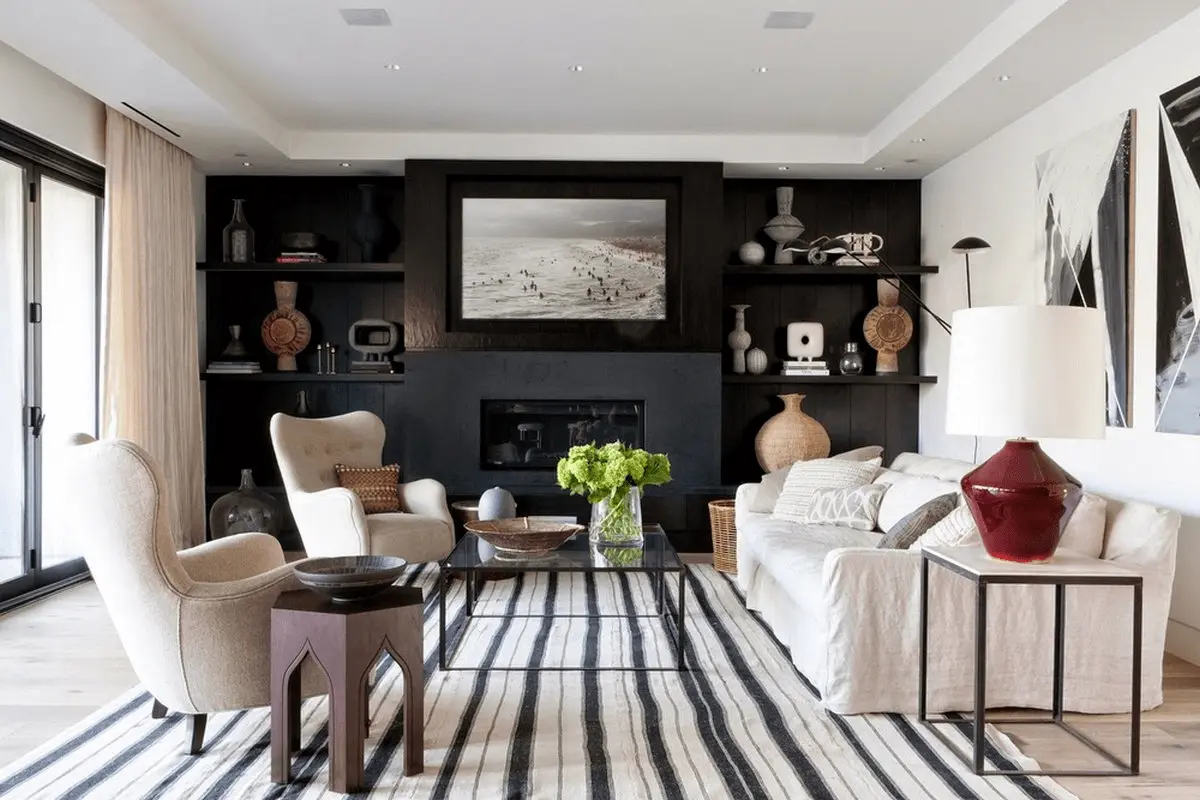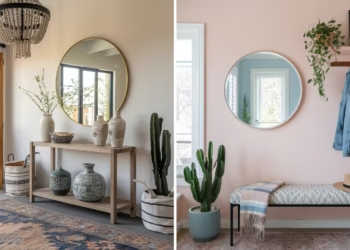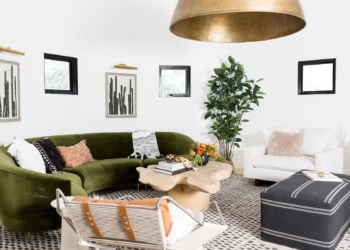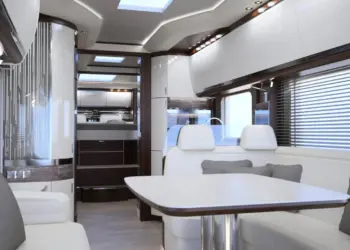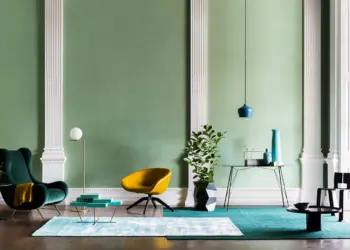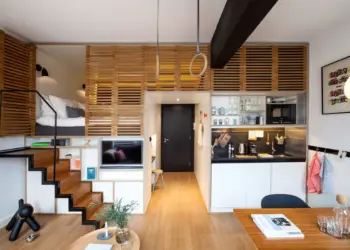Ever wondered why you step into a well-designed room and everything just feels perfectly harmonious? The answer often lies in the meticulous consideration of proportion in interior design. In this discourse, we’ll delve into the realm of proportion and unveil its pivotal role in shaping visually captivating and harmonious living spaces.
Table of Contents
Understanding the Significance of Proportion in Interior Design
Proportion, at its core, is all about equilibrium and harmony. It encompasses the intricate interplay between various elements within a room, culminating in a delightful visual spectacle. Two aspects underline its significance:
Creating Visual Harmony With Proportion in Interior Design
In the domain of interior design, the attainment of visual harmony reigns supreme. Proportion stands as the linchpin, ensuring that all elements within a space converse harmoniously. When executed with precision, it transforms a room into a haven of comfort and allure.
Influencing Spatial Perception
Proportion also exerts a profound influence on our perception of a room’s dimensions. Skillful manipulation of proportion can make a modest room appear more spacious, while haphazard application may overwhelm a generous space.
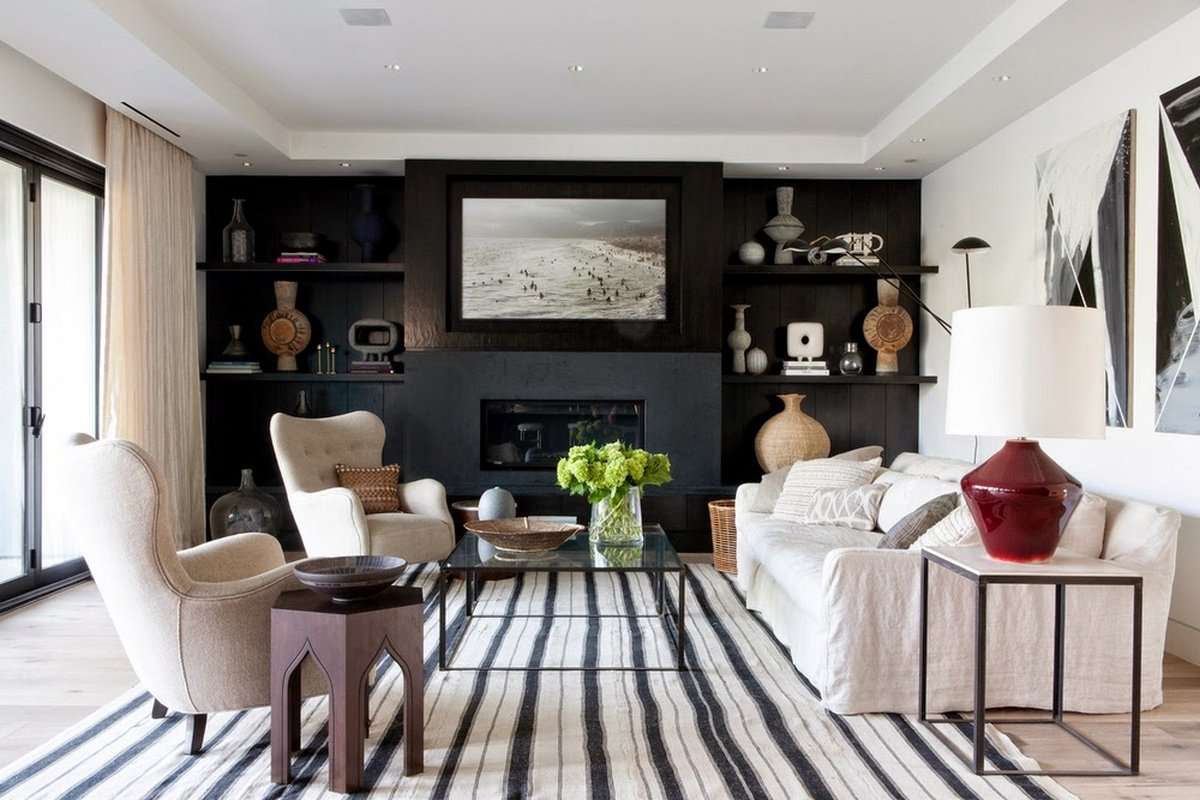
Exploring Types of Proportion in Interior Design
Several principles of proportion commonly grace the canvas of interior design. Let’s embark on a journey to comprehend a few of them:
The Golden Ratio
The golden ratio, often symbolized by the Greek letter phi (Φ), is a mathematical ratio that manifests in both nature and art. It’s characterized by a proportion where the sum of two quantities stands in the same ratio to the larger of the two, as the larger quantity does to the smaller. In the realm of design, this ratio is revered for its capacity to birth aesthetically pleasing and balanced compositions.
The Rule of Thirds
The rule of thirds involves dissecting a space into nine equal segments through the creation of two equidistant horizontal lines and two equidistant vertical lines. This symmetrical division begets a grid boasting four intersection points. Positioning key elements or focal points along these lines or at their junctures frequently yields a visually enticing arrangement.
The Fibonacci Sequence
The Fibonacci sequence, a numerical progression where each number is the sum of its two predecessors (e.g., 0, 1, 1, 2, 3, 5, 8, 13, …), is an intriguing phenomenon observable in both nature and art. Its proportions are acknowledged as inherently pleasing, leading interior designers to occasionally incorporate these proportions when orchestrating elements.
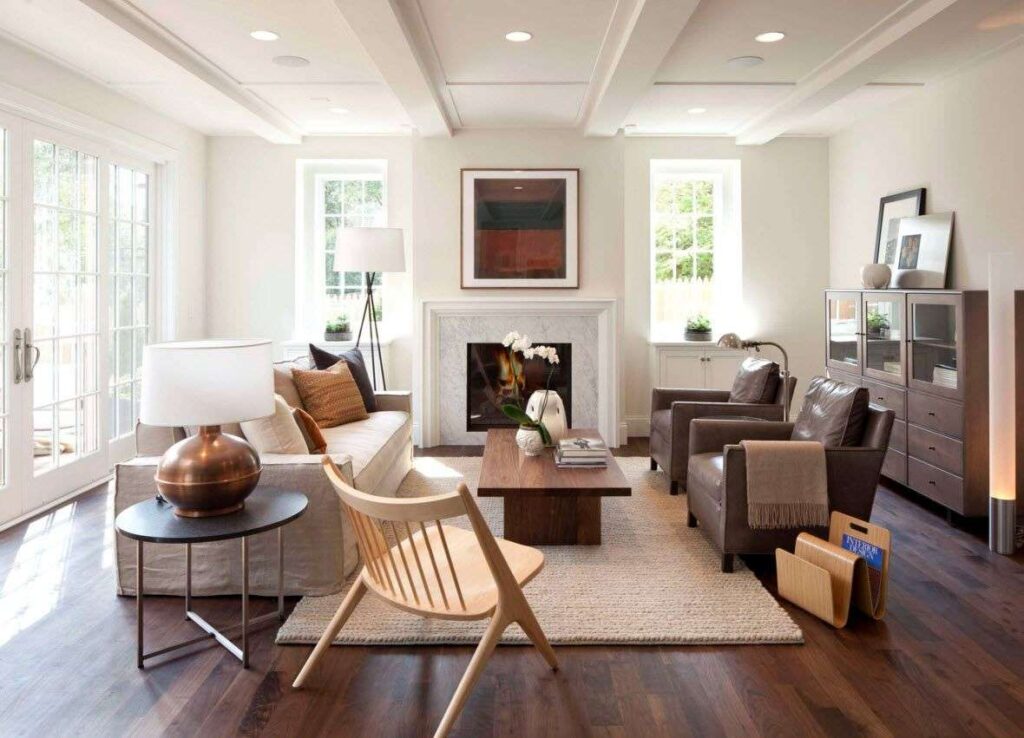
The Practical Application of Proportion in Interior Design
How do designers employ proportion to craft captivating interiors? Let’s cast a discerning eye on a few domains where proportion reigns supreme:
Furniture Arrangement
In the orchestration of furniture, it’s imperative to weigh the scale of each piece against the room’s dimensions. Excessive grandeur in a confined space can engender a sensation of constriction, while diminutive furnishings in a capacious room may appear adrift. Balance, therefore, emerges as the guiding principle.
Wall Art and Decor
The dimensions and placement of wall art and decor assume considerable importance in the overall proportion of a room. Sizeable artwork adorning a modest wall can bestow a dramatic focal point, whereas an assembly of smaller pieces can effectively fill a more expansive expanse.
Color and Pattern Selection
Proportion extends its influence beyond size; it permeates the realms of color and pattern. Discerning the proportionality of colors and patterns in your design is paramount. An overabundance of a single color or pattern can disrupt equilibrium.
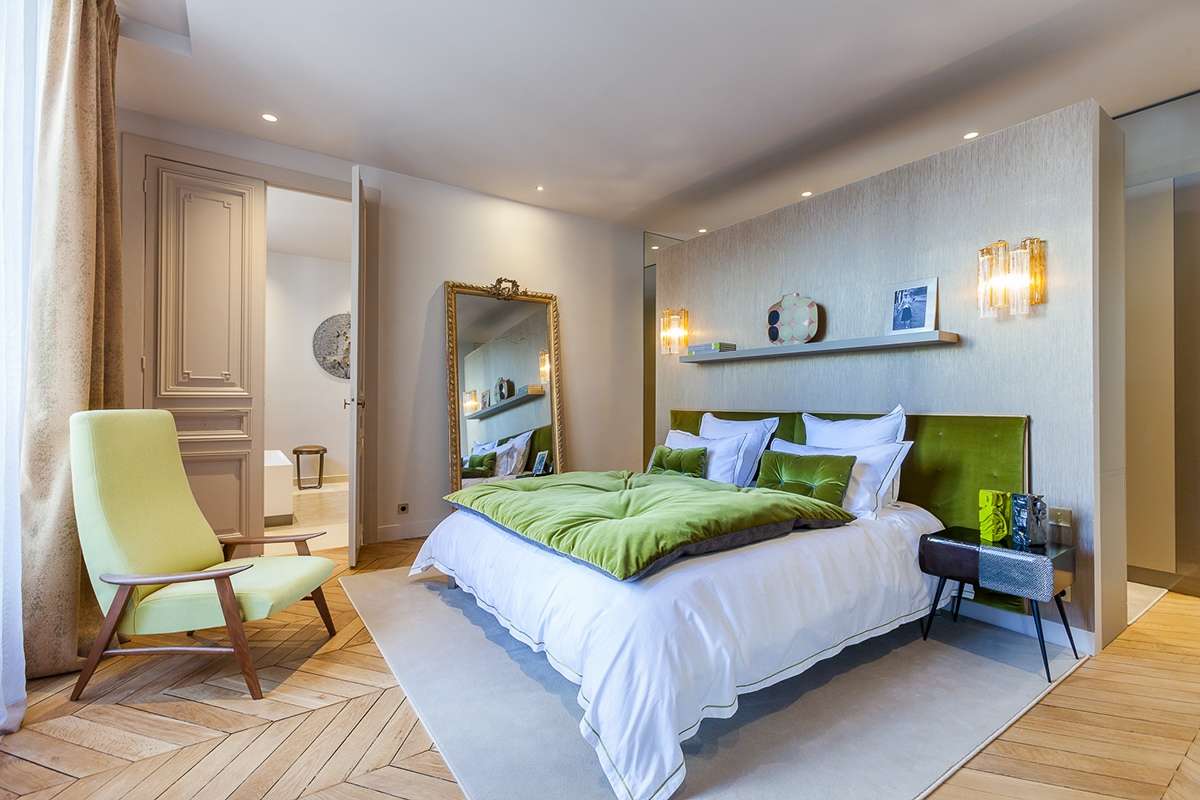
Pitfalls in Proportion: What to Avoid With Proportion in Interior Design?
While proportion is a guiding light, certain pitfalls are best sidestepped:
Overcrowding
Avoid inundating a room with an excess of furniture or decor. Such an approach can render the space congested and unwelcoming.
Neglecting Scale
The disregard of elements’ scale within your design can yield a discordant aesthetic. To preserve coherence, ensure that each element coexists harmoniously in terms of size.
Balance: The Quintessence of Proportion
Balance, nestled at the heart of proportion, is indispensable. A disarray in the positioning or size of elements can shatter the symphony of a room.
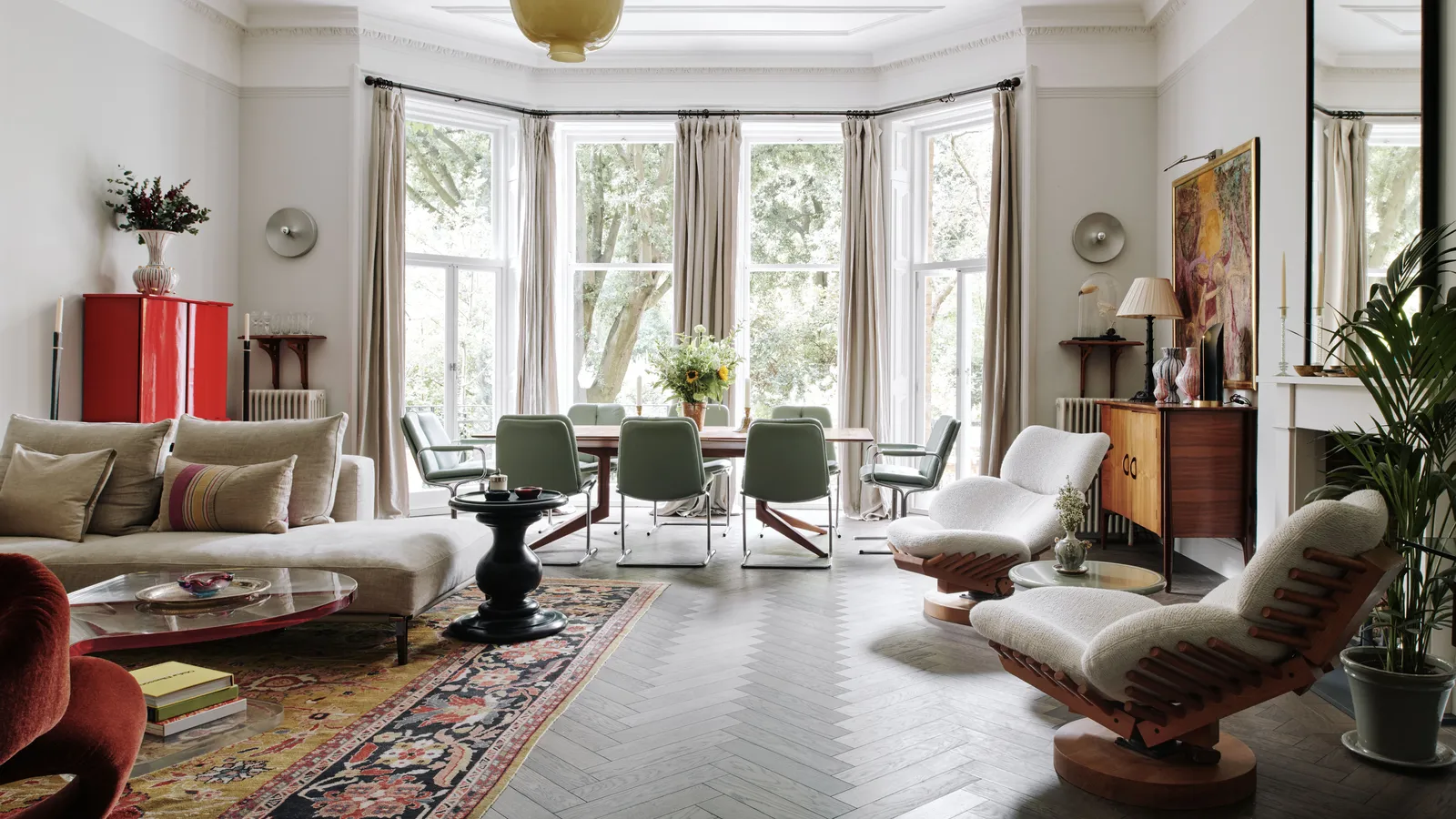
Illustrating Proportion Through Real-Life Examples
To underscore the significance of proportion, let’s turn to real-life exemplars:
Exemplary Designs
- The Parthenon in Athens, an architectural masterpiece, uses the golden ratio in its design.
- The iconic Eames Lounge Chair and Ottoman is celebrated for its perfect proportions.
Everyday Applications
- In a well-proportioned kitchen, countertops, cabinets, and appliances intermingle seamlessly.
- A balanced bedroom design harmonizes the bed, nightstands, and illumination.

Proportion vs. Symmetry: A Distinction
It’s paramount to differentiate between proportion and symmetry. While proportion revolves around size and placement to foster visual equilibrium, symmetry hinges on mirroring elements across an axis. A space can possess proportionality without embodying perfect symmetry, and vice versa.
Guidelines for Achieving Proportion in Your Space
Now that the import of proportion is clear, here are some guidelines to help you actualize it within your domain:
- Measurements Matter: Accurate measurement of your room and furniture is essential to ensure a snug fit.
- Embrace the Rule of Thirds: Employ this rule to situate pivotal elements or focal points.
- Experimentation is Key: Don’t shy away from experimenting with diverse arrangements and proportions.
- Seek Professional Counsel: Interior designers, seasoned in the art of proportion, can offer invaluable guidance.
In the realm of interior design, proportion emerges as the unsung hero, weaving harmony and equilibrium into spaces. It’s the quintessential ingredient that imparts that “just right” feel to a room. Whether you’re organizing furniture, selecting decor, or playing with color, always hold the tenets of proportion close to your heart. With the right equilibrium, your living space can transform into a harmonious sanctuary.
FAQs
Can I mix different proportion in Interior Design principles in one room?
Absolutely! The fusion of proportion principles can infuse depth and intrigue into your design.
What if I have a small budget for furniture?
How can I achieve proportion?
Focus on procuring pieces that align with your space’s dimensions, and consider exploring second-hand options.
Are there online tools or applications that can assist with proportion in interior design?
Indeed, there exists an array of interior design apps and tools tailored to assist you in envisioning and attaining proportion within your design.
Does proportion hold relevance in outdoor spaces as well?
Without a doubt! Proportion assumes a pivotal role in outdoor design, facilitating balance and harmony in gardens and patios alike.
What is an example of proportion in interior design?
An example of proportion in interior design is having appropriately sized furniture for a room, ensuring it fits well and doesn’t overwhelm or underutilize the space.
Why is proportion important in interior design?
Proportion is crucial because it helps create visual harmony and balance in a room. It ensures that elements like furniture, decor, and architectural features relate well to each other and the space itself.
How is proportion used in a room?
Proportion is used in a room by carefully selecting and arranging furniture and decor items of different sizes to create a pleasing and balanced visual composition. It ensures that no single element dominates the space, resulting in a harmonious and comfortable environment.
What is the color proportion in interior design?
In interior design, color proportion refers to the distribution and balance of different colors within a space. It involves considering the ratios of various colors used in elements like walls, furniture, decor, and accents to create a harmonious and visually appealing environment.
